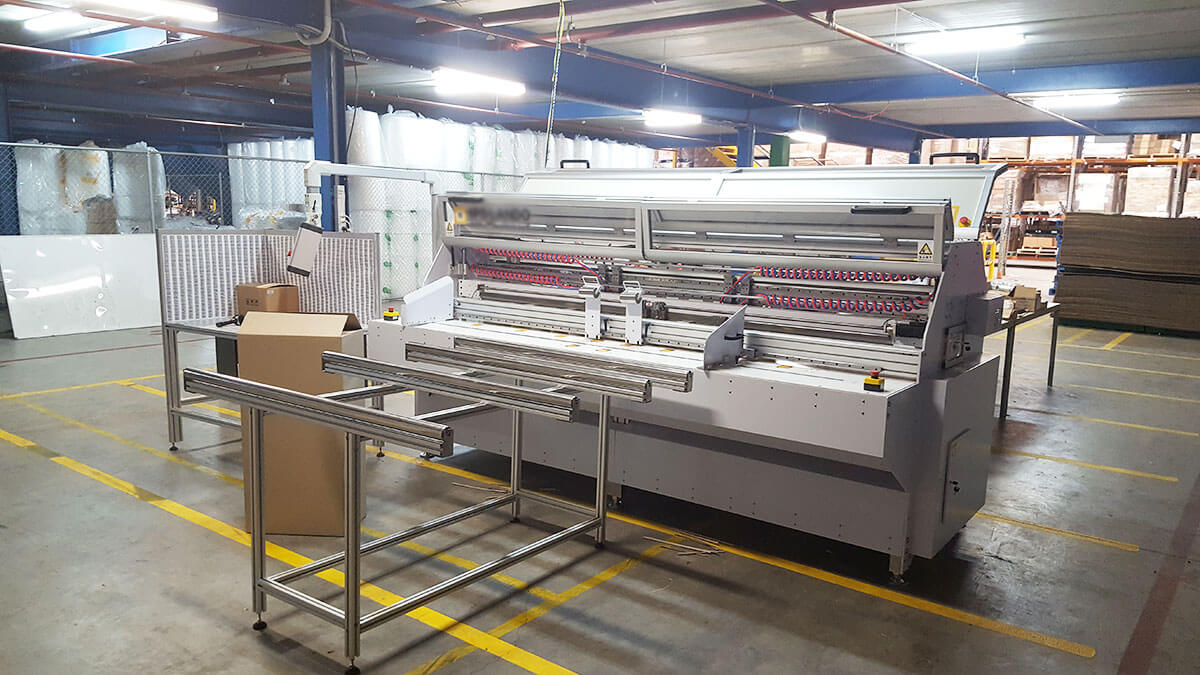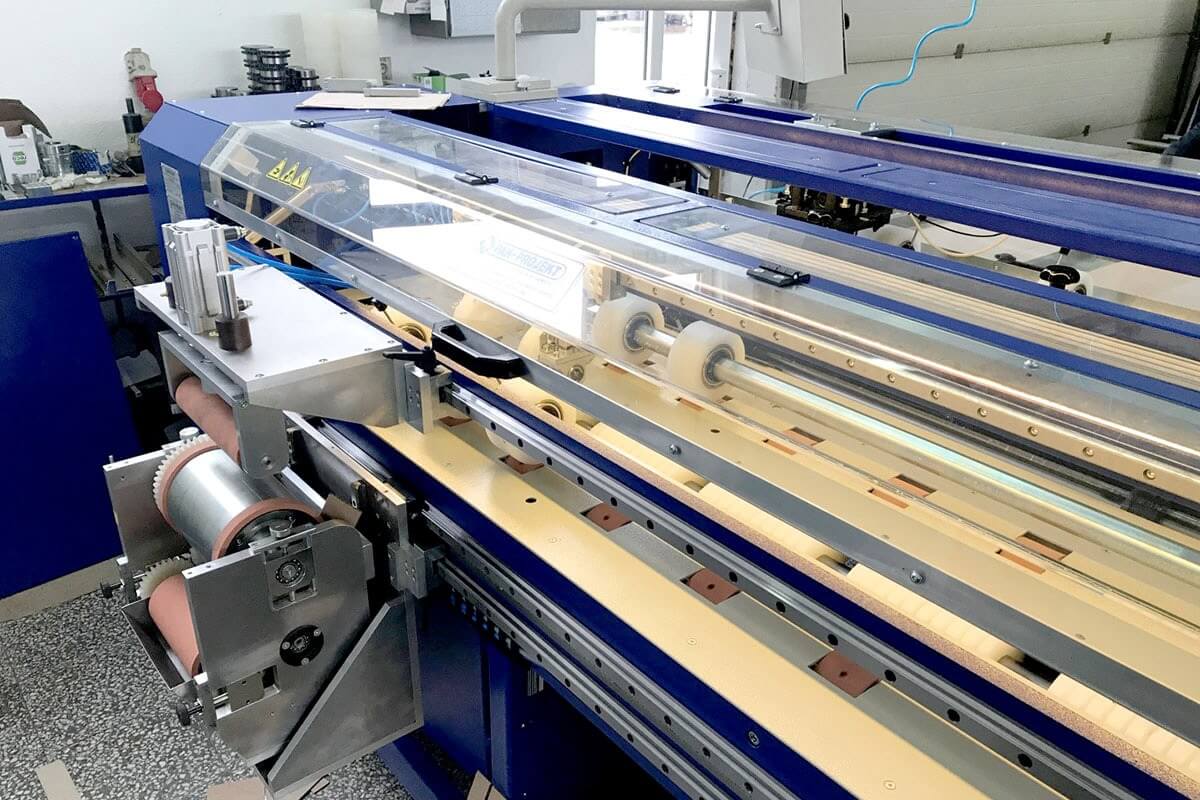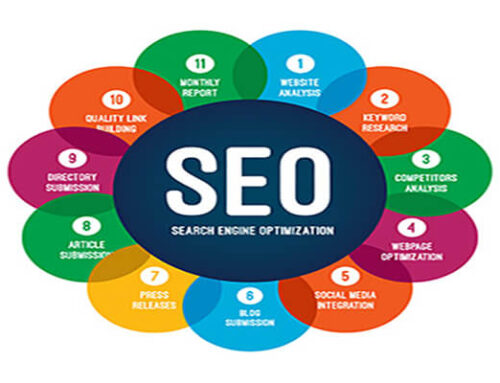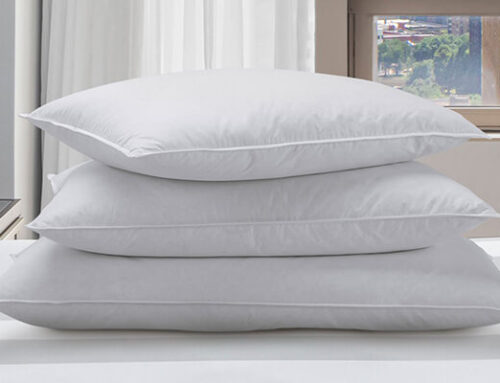With its unique environmental protection and economic advantages, corrugated boxes are recognized as “green packaging products” and are one of the most widely used forms of packaging in modern commerce. Do you know in which areas corrugated boxes can be used? Which carton packaging machines are in high demand? In this article, we will focus on Corrugated Box Machines.
With the further development of China’s economy, the replacement speed of cardboard-packing enterprises is accelerating. Corrugated machinery is moving towards high-end and small series, and corrugated cardboard production lines are moving towards wide-width, high speed, high precision, and full automation.
The water-based printing slot machine will develop in the direction of multi-color, high-speed, high-precision flexible printing, which will lead to the development of printing die-cutting technology.
1. What is corrugated cardboard
Corrugated cardboard is made of at least one layer of corrugated paper and one layer of boxboard (also called boxboard), which has good elasticity and extensibility. Mainly used in the manufacture of cartons, the center of cartons, and other packaging materials for fragile goods. It is mainly made of native straw pulp and waste paper by beating to make the original cardboard similar to yellow cardboard and then rolled into a corrugated shape through mechanical processing, and then bonded with the boxboard paper with an adhesive such as sodium silicate on the surface.
The advantages of corrugated cardboard:
- Transportation costs are affordable, and it is easy to mechanize and automate packaging and transportation.
- It can be greatly expanded by combining it with various coverings or moisture-proof materials.
- Waste bins are easy to recycle and reuse, and meet environmental protection requirements.
- It can adapt to the horizontal printing of various types of cartons and can solve the problems of product protection and promotion very well.
- It has many good protective functions for packaged items. For example, moisture resistance, heat dissipation, easy handling, etc.
- It is easy to change the specifications and dimensions of the carton, and the carton can quickly adapt to the packaging of various items.
- Sealing and bundling are convenient, easy to operate, and improve efficiency.
- The corrugated structure is similar to the arched structure, which can play the role of anti-shock and shock absorption, has good mechanical properties, is lightweight, and has good structural performance.

2. Need for corrugated machinery in manufacturing industries
In addition to a large number of daily necessities packed in cartons, most of today’s motorcycles, machinery, instruments, furniture, aquatic products, and fruits are also packed in cartons. Industry insiders believe that by emphasizing environmental protection at home and abroad, the domestic circular economy has promoted the development of green packaging, and the large-scale promotion of paper instead of wood and plastic will promote the use of a large amount of paper product packaging. In recent years, the corrugated carton-making machine industry has developed rapidly and steadily consolidated its leading position.
In recent years, due to various favorable factors, the market demand for corrugated packaging box-making machines has increased significantly. This benefited not only from the rise in the exchange rate, which improved the price competitiveness of products but also from the improvement in export conditions and the improvement in the overall economic environment. But first, carton packaging machinery companies pay more attention to cost performance.
With the rapid development of the entire cardboard industry, the development of complete sets of equipment in the corrugated box packing machine industry is bound to take the lead. In recent years, the manufacturing level of the cartooning machine industry has improved. The general trend of development is mechanical intelligence, and new intelligent products will bring enormous benefits. Suppliers will strive to develop more cost-effective solutions for customers. Reduce production costs, make production more flexible, and allow customers to get a faster return on investment.
There are main types of corrugated machinery in PingLong as follows: complete sets of corrugated box equipment, corrugated cardboard machines, corrugated die cutting machines, corrugated carton machines, corrugated flexo printing machines, small corrugated box making machines. Among them, the complete set of corrugated box equipment occupies a leading position in the packaging industry. with nearly 10,000 large corrugated box packaging enterprises. The worldwide demand for cardboard packaging machines is around 19 billion euros. Over the past ten years, the domestic demand for complete sets of corrugated box printing equipment has increased rapidly. Chinese corrugated box packing machines have been exported to Asia, Africa, Europe, and other regions.
3. Benefits of Corrugated Box-Making Machine
The following are the benefits of a Corrugated Box Making Machine.
1) Reduce labor costs
The manual carton closing process is tedious and time-consuming. A box must be choreographed in some way, which can be laborious and difficult if the content is too large or inconsistent. Even for lightweight containers, the time it takes to manually pack can slow down the whole process. Large companies invest a lot of time, money, and manpower in sealing operations. With a self-sealing machine, but with an automated machine, the job can be done in seconds!
2) Increase production
With increasing competition from digital platforms, even small changes can have a big impact on how customers perceive your business. Automation saves time and money for companies looking to increase productivity. Using a carton sealer speeds up the packaging process, allowing businesses to handle high-volume operations and gain a competitive edge.
3) Efficient use of tape material
Manual sealing is not as effective as a carton sealer. The manual process requires more tape to ensure the seal is done securely. On the other hand, a carton sealer can use a limited amount of material to seal the edges without creating waste. Efficient use of material means a lot to the business, as there is a lot of money invested in buying industrial tape. Not only that, but many tape sizes can be installed on the same machine, with low investment and high efficiency.

4) Product Safety
The goal of any manufacturing industry is to deliver products to customers in a safe and reliable manner. Therefore, replacing manual operation with a carton sealing machine has become a key step. The importance of transport security cannot be overstated – when packages are delivered, they must be free of damage that could compromise the integrity of the shipment. The carton packer will ensure that the box can withstand any stress applied during shipping.
5) Reduce employee injuries
Repeated movements can cause injury to employees who work long hours. By implementing automation and eliminating the human factor, you can save your employees from debilitating situations such as back pain, neck pain, or wrist injuries.
6) Reduction of overall costs
Installing end-of-line cartons can provide significant savings, as they are inexpensive to purchase, require little maintenance and are easy to integrate, meaning installation can be done without no complications.
7) Increase aesthetic beauty
A carton sealer offers the perfect way to improve the appearance of a carton container. With an eye to design, these high-quality machine seals create a cleaner aesthetic than a manual packaging process – enhancing your box’s shelf appeal and appealing to consumers who take pride in their purchasing decision.
8) Final Thoughts
You’ll save time and money by purchasing a carton sealer based on your manufacturing needs. It’s a small investment with a big return that will make everything run smoother from start to finish! The performance gains achieved with the use of a carton sealer are undeniable, making these machines one of the most critical elements in mass manufacturing.
4. Printing Models of Corrugated Machinery
Corrugated box printing is a process that involves printing on a flat surface using a wide range of print heads. These print heads are stored in the machine’s memory and automatically position themselves across the sheet. The printing heads also have an automatic cleaning system, which parks them underneath a cleaning station. The heads are then cleaned with a special tissue substrate.
1) Flexo printing
In we last article, we talked about PingLong’s Flexo printing, which is an easy and versatile method of printing on corrugated cardboard. The process uses printing plates mounted on endless belts that move at high speed and with great precision. It is especially suitable for printing on corrugated cardboard used for primary retail packaging and shipper boxes. This method produces high-quality, non-photo small corrugated box-making machine graphic images. PMS colors are best for flexo printing on corrugated cardboard.
The flexibility of the corrugated flexo printing machine makes it a great choice for packaging. While corrugated cardboard is often difficult to print on, this method can accommodate uneven surfaces. It uses flexible plastic or rubber plates that can transfer an image onto a moving substrate. This method is ideal for corrugated boxes, but it also works well on other packaging materials.
The advantages of flexo printing on corrugated boxes are obvious. It is a fast and affordable way to produce high-quality, high-volume packaging. The inks used are low-viscosity and dry quickly. Furthermore, a flexo machine can print at high speeds of up to 2,000 feet per minute. Flexo printing is best suited for high-volume jobs with limited color options. It is also the fastest method of printing but requires a high minimum order. It also requires very little setup time.
However, it is not the cheapest option. Therefore, flexo printing on corrugated is not a good choice for smaller quantities of box printing. Another benefit of flexo printing on corrugated packaging is that it is environmentally friendly. The manufacturing process of elastomer image carriers makes it more cost-effective for high-volume printing. It also allows the printing of graphic designs directly onto corrugated boxes. Flexo printing on corrugated boxes is a great way to promote your brand and build consumer trust.

2) Litho printing
Litho printing is an excellent choice for corrugated boxes, point-of-sale displays, and other retail signage. It also produces great results in floor-stand displays. This method has numerous advantages and is a cost-effective solution for our partners. However, it is not suitable for every application. To get the best results, you should consult a packaging and display vendor.
Litho printing uses two types of plates: the positive plate, which has a smooth surface and is compatible with oil-based inks. The negative plate, on the other hand, has a rough texture and absorbs water. This combination of positive and negative plates allows for precise placement of inks and image placement on corrugated. The image is then transferred from the plate to the corrugated surface using rubber rollers. The negative plate must be different for each color.
Litho printing is best suited for high-quality printed content. While the digital age has changed many aspects of our lives, we still like to hold and read printed matter. The book market is growing, and younger people are more likely to read printed matter. Litho printing also allows for the use of super-heavy stock and the highest-quality inks and finishes. Moreover, the finished product will look better when compared to other forms of packaging.
Litho printing is an economical option, and its cost-effectiveness increases with the number of boxes printed. However, it is best suited for very large printing projects, especially when you need to produce tens of thousands of identical designs. The downsides of this method are high tooling costs and long project lead times. The process of designing a printing plate is time-consuming and can cost thousands of dollars. In addition, it does not offer customization, so if you want to make changes to the design, litho printing is not for you.
5. Inline digital printing
Corrugated box printing machines enable companies to produce a high-quality image on the inside of the boxes. These machines are able to produce multiple colors and designs. They can be equipped with automatic platen or rotary die cutters. Corrugated box printing machines can also be equipped with a digital inkjet printer. Digital inkjet printing can produce excellent graphics on the inside corrugated sheet.
Inkjet technology has made significant advances and is now ready to meet the needs of corrugated box printing facilities. The RSR(r) printer, for example, is a high-volume digital printer, capable of printing at up to 300 m/s and a working width of 2,800 mm. The RSR(r) printer is an excellent choice for corrugated carton box-making machine plants because of its speed, working width, and print quality.
With the growing use of secondary packaging and displays, the quality of the printed image is increasingly important. Incorrect or incomplete printing can result in rejects, and this can significantly increase production costs. Traditionally, corrugated board is printed with a flexgraphic process. This printing machine features a 100% inline inspection system, which compensates for typical substrate structure and detects relevant printing defects.
Inline digital printing is a good option for smaller production runs. It allows for faster production runs with less downtime. PingLong flexo corrugated box printing machine has a maximum speed and offers many advanced features to increase productivity and minimize costs. If you want your corrugated boxes to be unique, choose Pinglong digital printing machine for the corrugated boxes.
6. Rotary roller die-cutting
PingLong corrugated machinery is suited for the die-cutting of corrugated cardboard and other packaging materials. Its innovative design allows for various packages to be die-cut in a single process. It is equipped with a series of rim-cutting blades that protrude from the die board’s cylinder. The rim-cutting blades shave small pieces from the outer edge of the corrugated board while leaving the product board intact. The feeding speed is up to 60 sheets per minute.
The rotary roller carton die-cutting machine on a corrugated board printing machine includes three basic operating stations: the first print station, rotary roller die-cutting station, and die board. The first station consists of a motor and gear network to drive the rotary die cylinder, the anvil cylinder, and the die board. The second print station contains a gear network that drives the die-cutting station.
The blades are used to cut and score the corrugated panel. The blades cut off the excess material and score the corrugated material to create a corrugated box or other container. The die board is then cut into strips using a trim-cutting blade. A trim stripper is usually placed adjacent to the blades. The rotary die-cutting and flexo printing process can be performed in-line. These machines are ideal for producing complex displays and packaging. They are also suitable for high-quality graphics.
Improved color consistency and tight registration are important criteria in today’s marketplace. Hence, BOBST has developed a line of flexo printers and rotary die-cutting machines that can fulfill these demands. The process of corrugated cardboard die-cutting machine allows you to create virtually any type of packaging. This includes boxes with different material thicknesses and folds. It can also facilitate the fulfillment process. It has standardized the corrugated packaging industry’s codes and replaced complex code descriptions with digital codes.

7. Letterpress printing
Our corrugated box printing machine is a two-color flexographic printing sheet for printing on corrugated boards, clay boards, or flute boards. The machine’s flexographic printing ink is characterized by a high dot resolution, rich color, and a clear boundary. This type of printing machine can produce hundreds of boxes per hour and is best suited for medium to large-batch printing. Corrugated board is a strong and durable material.
However, printing directly on it can be difficult due to its ridged surface. For better print quality, the cardboard is litho-laminated. This process produces a smoother and more durable finish than letterpress printing. In addition, the litho-laminated method preserves the fluting of the material.
Another method of corrugated box printing uses a flexographic printing machine. This technique, also known as flexography, is similar to letterpress printing but requires a manual setup. It is generally used for packaging and basic branding. In addition, flexography printing machines are simple to operate and can be adapted to use water-based inks. They are also inexpensive. Unlike the letterpress printing method, flexo printing uses printing plates.
These plates are mounted on a machine and the operator applies the ink evenly to the plates. The ink is then transferred directly or indirectly to the corrugated box. This method is suitable for large production runs. Besides letterpress printing, digital printing has a wide range of uses. Its advantages include its quick printing speed and no minimum order quantity. In addition, digital printing can handle different types of substrates, unlike letterpress printing, which requires a high amount of attention to detail.
8. Conclusion
Above is our introduction to the corrugated box manufacturing machine, After reading this article, will you choose the carton manufacturing machine?





Leave A Comment